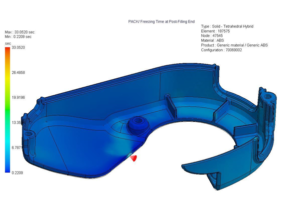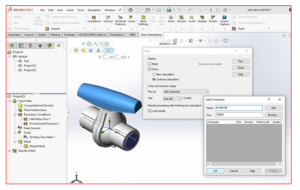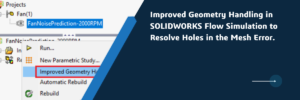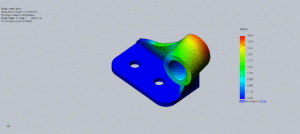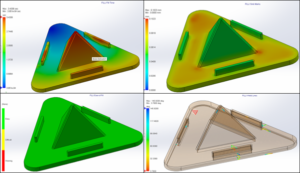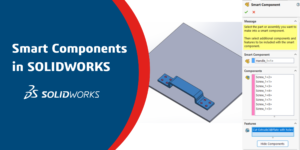SOLIDWORKS Flow Simulation is capable of calculating radiation heat transfer between solids whose surface emissivity is specified. If necessary, a heat radiation from the computational domain’s far-field boundaries or the model’s openings to the model surfaces can be defined and considered either as from solid surfaces, i.e. by specifying these boundaries’ emissivity and temperature or as a solar radiation having a specified constant or time-dependent direction and intensity.
The radiation heat transfer is analysed under the following assumptions:
- The heat radiation from the solid surfaces, both the emitted and reflected, is assumed diffuse (except for the symmetry radiative surface type), i.e. obeying the Lambert law, according to which the radiation intensity per unit area and per unit solid angle is the same in all directions.
- The heat radiation propagating passes through a body specified as a radiation transparent body without any inclination and loss.
- The project fluids neither emit nor absorb heat radiation (i.e., they are transparent to the heat radiation), so the heat radiation concerns solid surfaces only.
- The radiative solid surfaces, which are not specified as a blackbody or white body, are assumed an ideal grey body, i.e. having a continuous emissive power spectrum similar to the blackbody one, so their monochromatic emissivity is independent of the emission wavelength. For certain materials with certain surface conditions, the grey body emissivity can depend on the surface temperature.
Flow Simulation can only do surface-to-surface radiation. Participating media (radiation from bulk fluid to a surface and vice-versa) is not possible. Participating media is on the list of enhancements but no date has been determined when and if it will be added.







